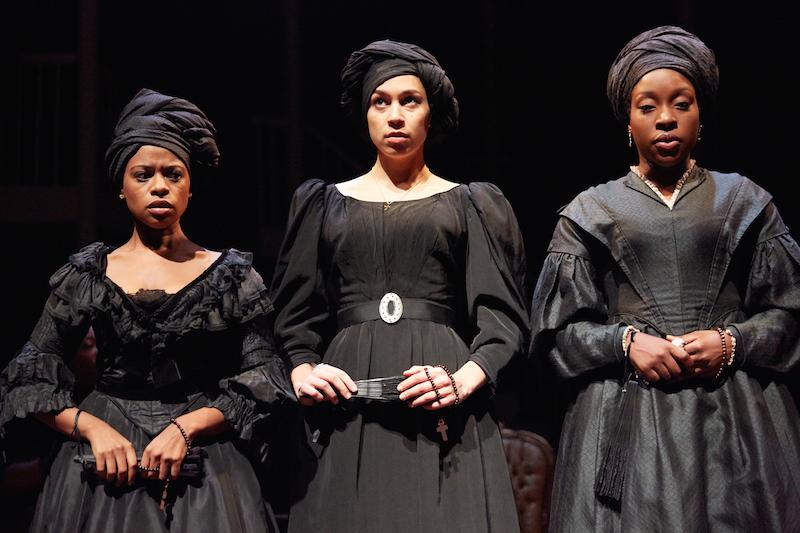
Tom Piper is at the forefront of British stage design, having worked over the years for a sizable swathe of theatres up and down the UK. Piper had a long and fruitful association with the Royal Shakepeare Company as well as a longstanding relationship with Indhu Rubasingham, artistic director of the Kiln, where he is that playhouse's new associate designer, Among his initiatives at the Kiln has been the launch of two nine-month resident assistant designer positions so as to abet people early in their careers. Piper lays out his hopes for the venture below.
The last year has really brought home how few opportunities there are for recent graduates and those who for whatever reason have a passion for design but haven't been able to get an official qualification so as to get a foothold in the theatre industry. It has long been a passion of mine to give early career designers the experience of working in a building, both for the security and additional on the job training it affords and the connections that can be made to build a career. Often the only paid opportunities available to designers starting out is the kind of assistant work where you are very much employed to make a model and there is little expectation that the designer will take you to workshops, fittings or rehearsals, so you are only experiencing one aspect of the job.
Back in 1989, I was myself inspired by seeing Peter Brook's production of The Mahabharata at the Tramway in Glasgow to contact the designer Chloe Obolensky. Although I was still at college doing a post graduate course at the Slade School of Art, she suggested I came to work as an assistant on Brook's next production, La Tempête. And so I quit my course (returning only to put up the end of year exhibition) and spent six months in Paris at the beautiful Bouffes du Nord theatre. Chloe made sure that I was fully integrated into the company, so as well as model making, I ended up building props, helping with scenic finishes and following the rehearsal process of that amazing production.
I was given the responsibility of overseeing the construction of the touring venues in Switzerland, Germany and Japan. On graduating, with that experience on my CV and the confidence it gave me, I was able to get meetings with many directors. This, in turn, propelled me into quite large scale productions as the sole designer, perhaps in hindsight before I was really ready! My first encounters with theatres such as Nottingham Playhouse could have been disastrous were it not for the willingness of the staff to share their knowledge. I vividly remember how the head of wardrobe took me under her wing and gave me the kind of on the job learning that I had completely missed as a student. I got to see first-hand how fittings work, how to work with a mix of makes and stock, how to discuss ideas with actors and how to collaborate with the other in-house technical teams. I recognise now that these kind of opportunities, from which I learned so much, are increasingly rare. As over the years more and more crafts have been outsourced, there are few focussed chances for early career designers to learn from the hive wisdom of a building or from designers who have the luxury of time and money to allow you to fully follow their process.
In 2004, as an Associate at the RSC, I persuaded Michael Boyd that we should create a trainee scheme where emerging designers could learn from the full range of in-house craft skills. This exposed me to the brilliance of the many design schools in the UK. I studied more than 120 portfolios each year so as to narrow them down to a short list of ten and then a final two designers who spent a year at the company. In my time, over 20 designers went through the scheme and I am proud that quite a few have gone on to have fulfilling careers. I believe that this initiative gave them not only the security of a regular salary straight out of college and the chance to work alongside a whole range of experienced designers, but also valuable early connections to help build their own peer network with the resident assistant directors.

Photo c. Marc Douet
I am so pleased that despite this horrible year for the industry we have managed to get the go ahead to create a scheme at the Kiln Theatre, through the generous funding of Backstage Trust. I am taking up a part time post as Associate Designer, contributing to the artistic planning of the theatre and getting involved in all things design related (though not actually shows, more of a supportive role to any incoming freelancer who wants a chat!) Most importantly we have been drawing up the job description for the role and planning the application process. It is important to the values of the Kiln that we try to cast the net as wide as possible in order to give an opportunity to those who are currently under-represented in theatre design.
In the long run I hope this will provide the model for the creation of similar schemes, supported by experienced designers from SceneChange and the Society of British Theatre Designers working with their local theatres. The goal is to help create the impactful change in the sector towards which we all aspire and to assist in ushering in the next generation.
Tom Piper Photo Credit: Ellie Kurttz
More information on the Kiln Theatre here





